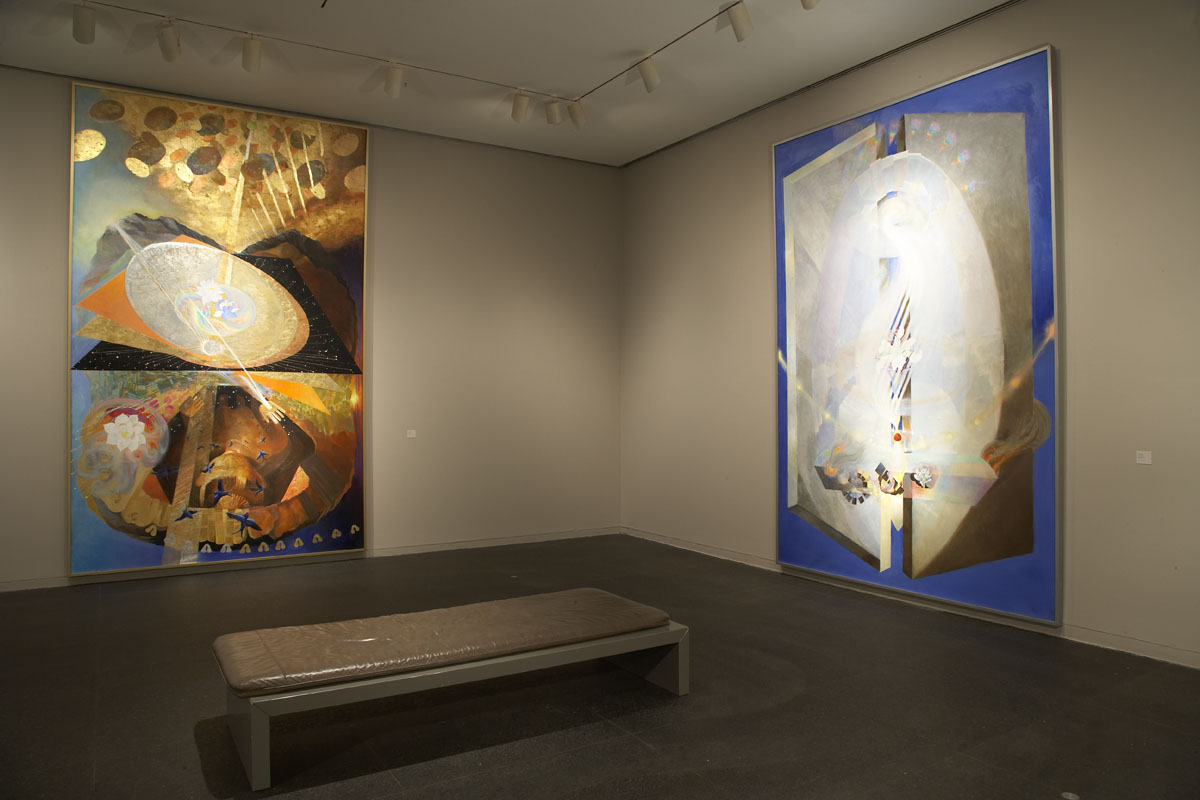Forum 61
In 1989, Lowry Burgess (American, 1940–2020) became the first artist to reach orbit—literally. Working with NASA, the Pittsburgh-based artist launched Boundless Cubic Lunar Aperture into space on board a shuttle mission, and the sculpture completed 93 orbits around the Earth. That work consisted of a cube containing water gathered from the eighteen greatest rivers in the world and from geysers, glaciers, wells, and springs all over the planet. Burgess distilled these waters together on the surface of the Dead Sea, combined them with all the elements from the periodic table, and then sealed the final product in a vacuum chamber. Once in space, weightlessness completed the work. The cube now resides in an underground shaft near Walden Pond in Massachusetts where it hovers in a permanent magnetic field.
Boundless Cubic Lunar Aperture is part of a monumental ongoing project called the Quiet Axis. Begun in 1966, the Quiet Axis explores the earth, universe, cosmology, and humankind’s relationship to these elements. The series comprises eight elaborate artworks, created under the seas and oceans, on deserts and mountaintops, and in outer space. The paintings on view in this gallery are manifestations of the Quiet Axis and describe visions or dreams Burgess experienced. He referred to these paintings as “visionary portals” or “gateways” that connect the viewer to aspects of the Quiet Axis. These “manifestations” are tied to an artistic practice that combines physics with philosophy while demonstrating an intense sensitivity to humankind’s place within the greater reaches of the infinite.
Burgess invited the viewer to stand at the threshold of his portals and consider the immensity of the physical universe. The six works on view here offer entry to the artist’s unique poetic vision and his 40-year quest in search of “the soul of the world, wherein they are neither object nor belief—where darkness and light are one and an eternal presence.”






